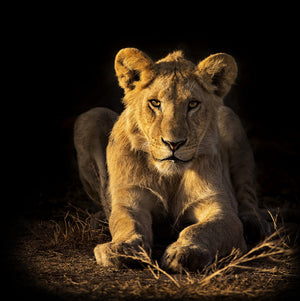
Bold, elegant, and irresistibly smooth — the Lioness is a sparkling cocktail that blends the sultry taste of PinkKitty Liqueur™ with the crisp luxury of premium champagne. It’s a drink for the confident, the playful, and the fiercely sophisticated.
INGREDIENTS
- 1.5 oz. PinkKitty Liqueur™
- 5 oz. Premium Champagne
DIRECTIONS
Mix Ingredients in a fancy champagne glass and enjoy!
Lions (Panthera leo) are one of the big cats in the genus Panthera and a member of the family Felidae. The commonly used term African lion collectively denotes the several subspecies found in Africa. With some males exceeding 250 kg (550 lb) in weight,[4] it is the second-largest living cat after the tiger. Wild lions currently exist in sub-Saharan Africa and in India (where an endangered remnant population resides in Gir Forest National Park). In ancient historic times, their range was in most of Africa, including North Africa, and across Eurasia from Greece and southeastern Europe to India. In the late Pleistocene, about 10,000 years ago, the lion was the most widespread large land mammal after humans: Panthera leo spelaea lived in northern and western Europe and Panthera leo atrox lived in the Americas from the Yukon to Peru.[5] The lion is classified as a vulnerable species by the IUCN, having seen a major population decline in its African range of 30–50% per two decades during the second half of the twentieth century.[2] Lion populations are untenable outside designated reserves and national parks. Although the cause of the decline is not fully understood, habitat loss and conflicts with humans are the greatest causes of concern. Within Africa, the West African lion population is particularly endangered.
Lions typically inhabit savanna and grassland, although they may take to bush and forest. Lions are unusually social compared to other cats. A pride of lions consists of related females and offspring and a small number of adult males. Groups of female lions typically hunt together, preying mostly on large ungulates. Lions are apex and keystone predators, although they are also expert scavengers obtaining over 50 percent of their food by scavenging as opportunity allows. While lions do not typically hunt humans, some have. Sleeping mainly during the day, lions are active primarily at night (nocturnal), although sometimes at twilight . To learn more or to help, visit www.unitedforwildlife.org







